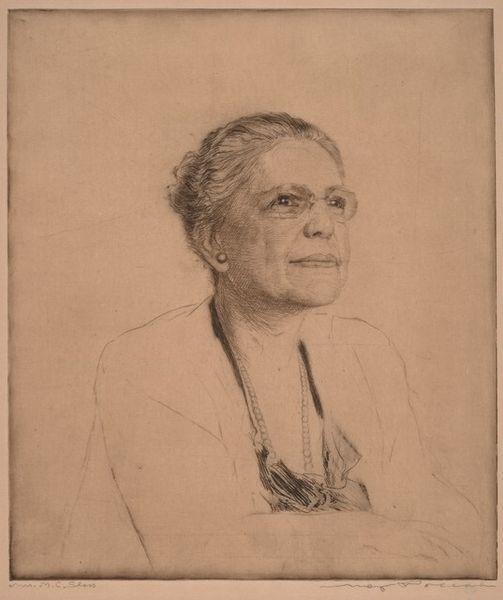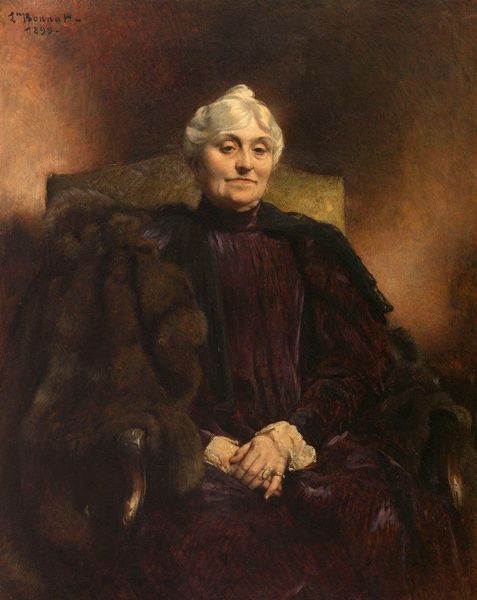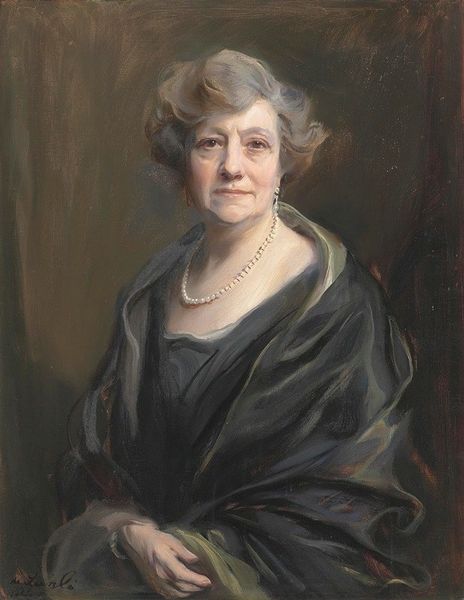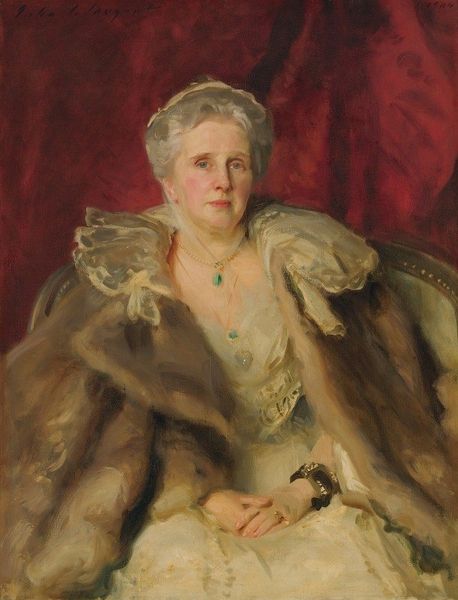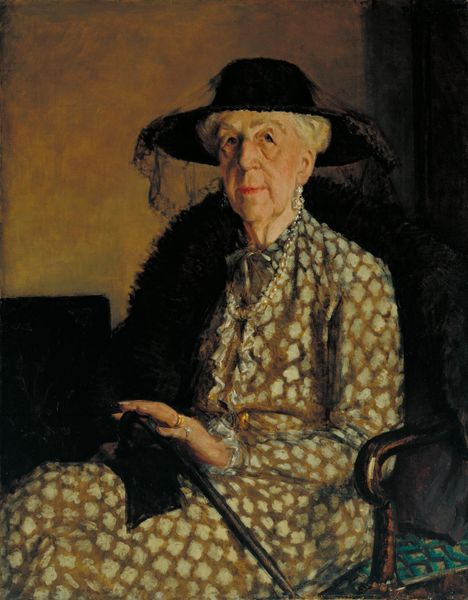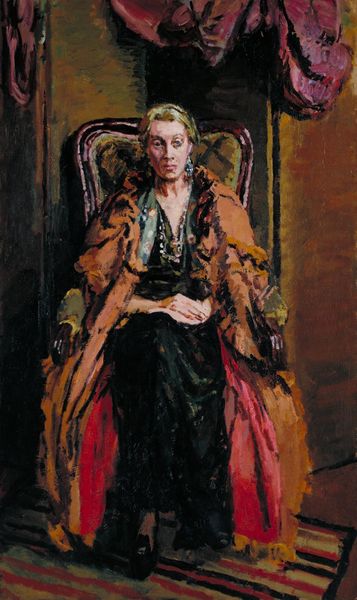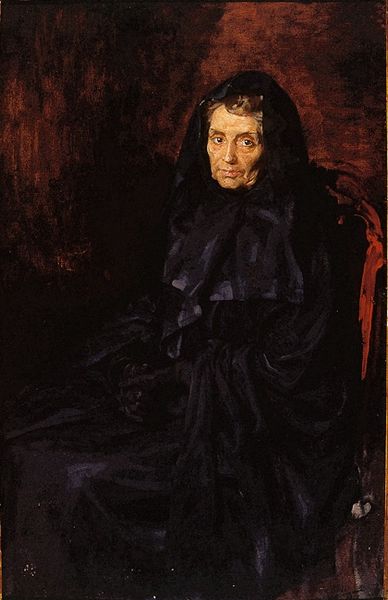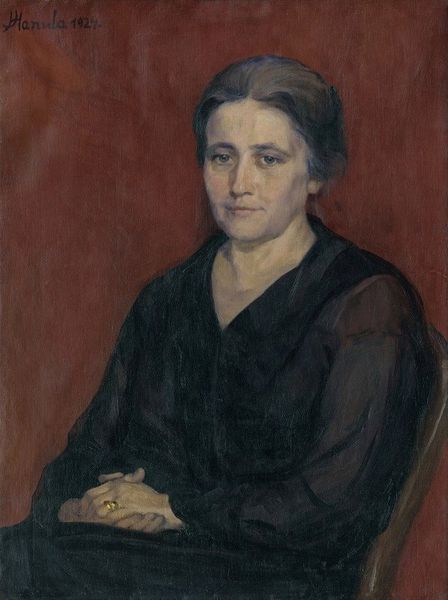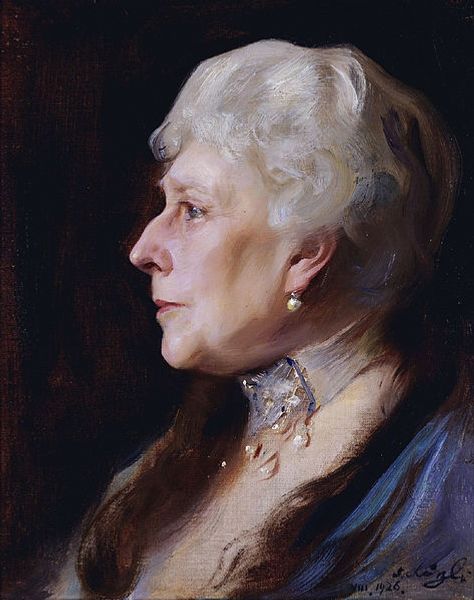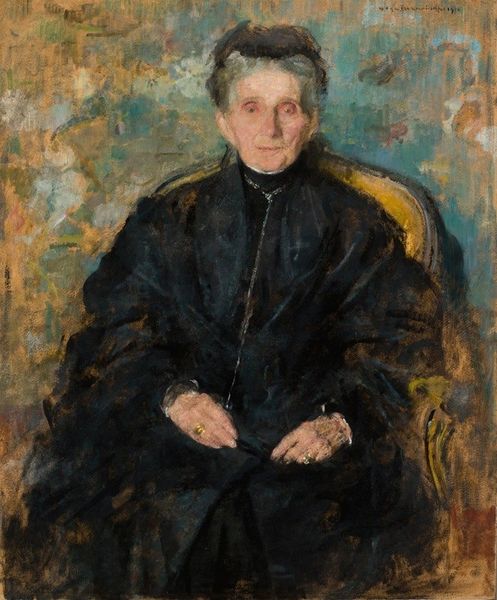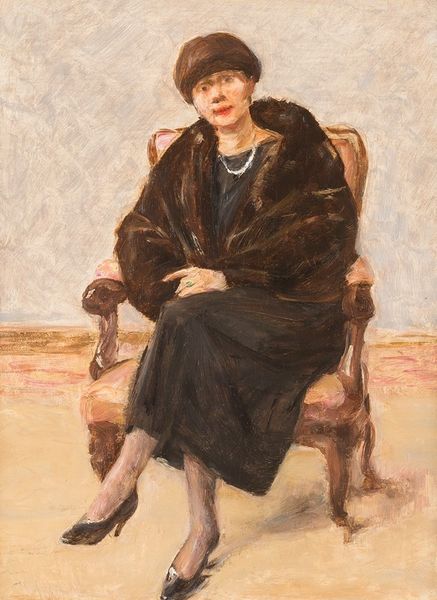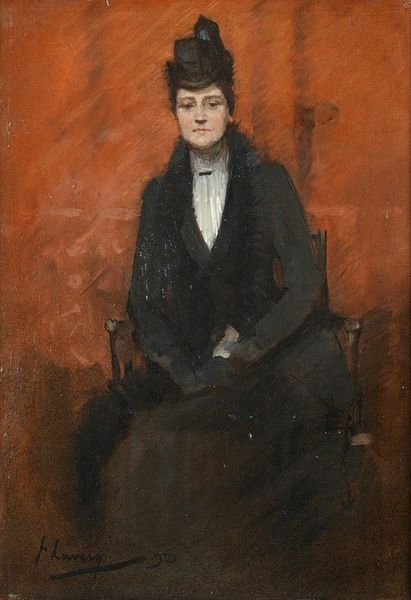
painting, oil-paint
#
portrait
#
figurative
#
painting
#
oil-paint
#
oil painting
#
underpainting
#
romanticism
#
genre-painting
#
academic-art
#
portrait art
#
realism
Copyright: Public Domain: Artvee
Curator: Let’s turn our attention to this arresting portrait. The work, executed in oil on canvas, depicts Ludovika, Duchess in Bavaria. Franz von Lenbach captures her with striking realism, inviting contemplation about her life and station. What are your initial impressions? Editor: My first thought is gravity. There is such a depth of emotion in the Duchess’s gaze—almost melancholy, though imbued with immense dignity. It evokes the weight of tradition, family lineage, and perhaps even suppressed frustrations in a role largely dictated by societal expectation. Curator: The symbols of aristocracy certainly abound. Her opulent fur-trimmed mantle and prominent jewelry serve as signifiers of rank. These symbols, in many eras, were also believed to possess talismanic properties, or conveyed implicit messages of health, prosperity, or status within the aristocratic network. Do you see any evidence of that? Editor: Absolutely, but they simultaneously render her somewhat inaccessible, which might invite an uncomfortable reflection on the function of inherited power. And look at the gesture—the subtle yet firm grip on what seems to be a riding crop. It is indicative of strength, I’d suggest, as much as of refined nobility. Curator: It makes me consider the enduring semiotic weight of portraiture in aristocratic lineages—the family gallery filled with familiar features repeated over generations—the transmission of genetic destiny or resemblance—whether real, symbolic, or projected. These images are so loaded with both intentional and unconscious symbolism. Editor: Indeed. What's fascinating here is how von Lenbach balances the overt symbols of power with a subtle sense of individual personality. He provides a lens through which we might speculate on the internal life of a woman who, by birthright, had limited freedom to define her own identity. It is almost an invitation to reflect on what history silences. Curator: The shadows really contribute to this effect—veiling her figure and deepening the mystery. These paintings, after all, often became central instruments of maintaining particular cultural narratives and ideals. I am wondering about the messages this painting was meant to perpetuate. Editor: I agree—that somber quality prompts us to consider the social structures that framed her experience and how even representations are laden with ideological weight. A subtle but strong testament to the restricted lives of even very privileged women. Curator: So, this encounter has been more than a moment of aesthetic admiration for me; it is a chance to meditate on how visual emblems are so important for constructing—or deconstructing—narratives of power. Editor: For me, it is an exercise in empathetic historical reading, probing into a specific narrative in light of the broader systemic conditions that both empowered and confined this woman.
Comments
No comments
Be the first to comment and join the conversation on the ultimate creative platform.
